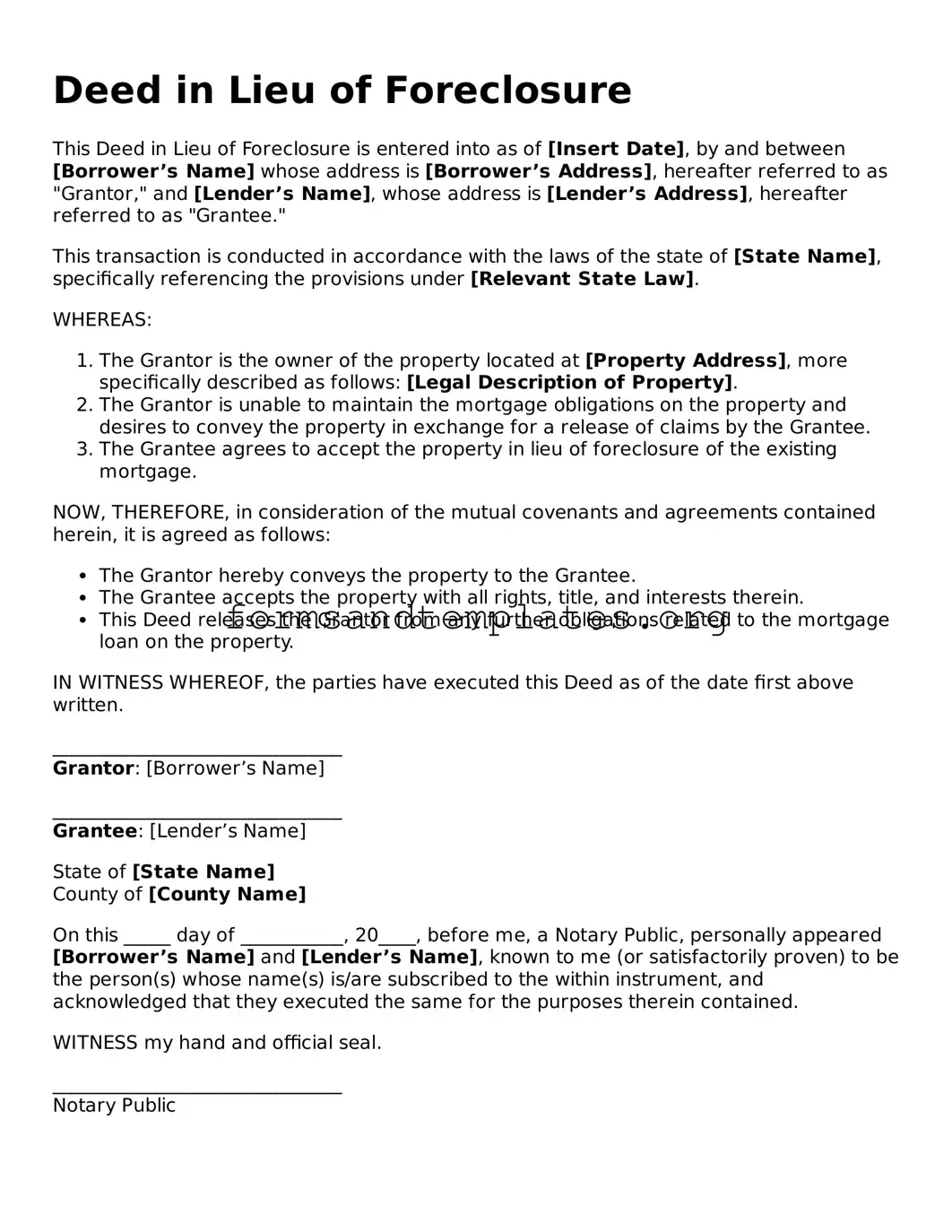Deed in Lieu of Foreclosure
This Deed in Lieu of Foreclosure is entered into as of [Insert Date], by and between [Borrower’s Name] whose address is [Borrower’s Address], hereafter referred to as "Grantor," and [Lender’s Name], whose address is [Lender’s Address], hereafter referred to as "Grantee."
This transaction is conducted in accordance with the laws of the state of [State Name], specifically referencing the provisions under [Relevant State Law].
WHEREAS:
- The Grantor is the owner of the property located at [Property Address], more specifically described as follows: [Legal Description of Property].
- The Grantor is unable to maintain the mortgage obligations on the property and desires to convey the property in exchange for a release of claims by the Grantee.
- The Grantee agrees to accept the property in lieu of foreclosure of the existing mortgage.
NOW, THEREFORE, in consideration of the mutual covenants and agreements contained herein, it is agreed as follows:
- The Grantor hereby conveys the property to the Grantee.
- The Grantee accepts the property with all rights, title, and interests therein.
- This Deed releases the Grantor from any further obligations related to the mortgage loan on the property.
IN WITNESS WHEREOF, the parties have executed this Deed as of the date first above written.
_______________________________
Grantor: [Borrower’s Name]
_______________________________
Grantee: [Lender’s Name]
State of [State Name]
County of [County Name]
On this _____ day of ___________, 20____, before me, a Notary Public, personally appeared [Borrower’s Name] and [Lender’s Name], known to me (or satisfactorily proven) to be the person(s) whose name(s) is/are subscribed to the within instrument, and acknowledged that they executed the same for the purposes therein contained.
WITNESS my hand and official seal.
_______________________________
Notary Public
